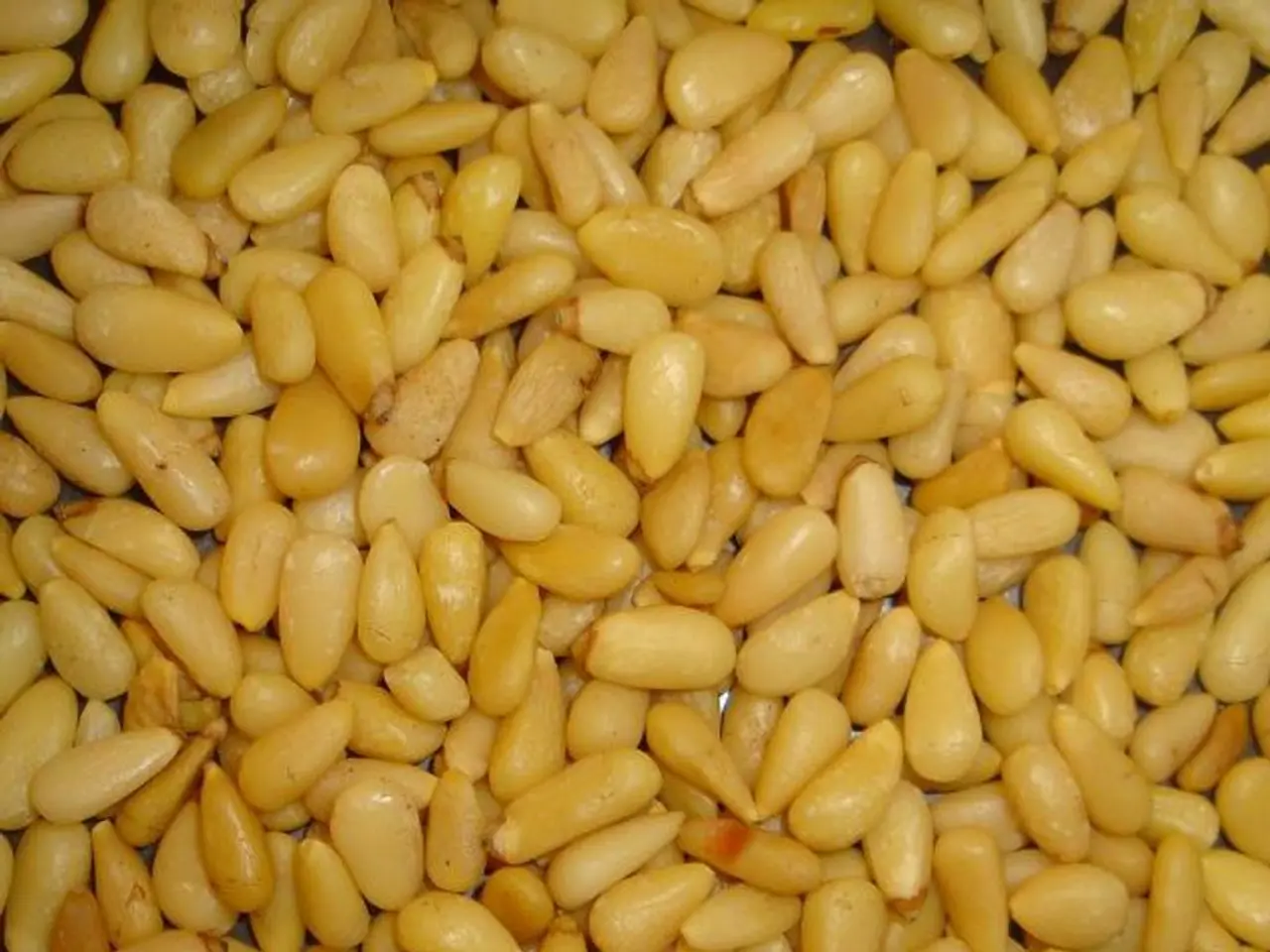Cultivating Corn Soil: A Detailed Process Overview
In the world of agriculture, corn is a staple crop that requires careful soil preparation to thrive. Here's a comprehensive guide on how to create the ideal soil conditions for corn growth.
To achieve well-drained, fertile, and slightly acidic soil, follow these steps:
- Adjust the soil pH: Aim for a pH between 6.0 and 7.0, ideally around 6.0 to 6.8, since corn performs best in slightly acidic to neutral soils.
- Loosen the soil structure: Ensure the soil is loose, fluffy, and well-draining by avoiding compaction. Use techniques like double digging or forking to loosen the soil about 4 inches deep.
- Enrich the soil: Amend the soil with finished compost or aged manure several weeks before planting to increase fertility and organic matter content. This enriches the soil and improves structure and moisture retention while supporting nutrient availability.
- Incorporate a natural nitrogen source: Add a natural nitrogen source like alfalfa pellets, which also help loosen the soil and provide slow-release nitrogen essential for corn growth.
- Use a balanced fertiliser: Incorporate a balanced fertiliser containing nitrogen, phosphorus, and potassium based on product instructions to meet the nutrient demands of corn.
- Choose the right location: Select a location with full sun exposure (at least 6 to 10 hours per day) to maximise photosynthesis and healthy growth.
- Wait for the right time: Wait to plant until the soil temperature remains consistently above 60°F (16°C), preferably closer to 65–70°F (18–21°C) for optimal seed germination and seedling vigour.
Additional context: - Soils with a balanced texture, such as Alfisols common in some agricultural regions, naturally provide good drainage and fertility suitable for corn, but erosion control may be needed on slopes. - If the soil is more acidic (below 6.0) or too compacted, soil amendments and liming (to raise pH) might be necessary to optimise nutrient availability.
When it comes to watering, watering in the early morning or early evening helps prevent the growth of fungi and other diseases. The most critical periods for watering are during pollination and the final ear-filling stage. Soaker hoses or drip irrigation placed alongside the rows of corn plants are excellent methods to ensure adequate water supply without wetting the foliage.
Corn is a heavy feeder and needs a soil rich in organic matter to provide necessary nutrients. If you are unable to conduct a soil test, a general guideline is to apply 6 pounds of 10-10-10 fertiliser per 100 linear row feet before planting. Each corn plant should have about one square foot of space. To prepare the soil for planting corn, add compost, organic matter, and balanced organic fertiliser.
Lastly, it's recommended to plant corn in blocks rather than rows for good pollination. Wind protection is crucial for corn plants to prevent damage and affect pollination. If lime is required, it is best applied 2-3 months before planting.
By following these steps, you'll be well on your way to growing healthy, thriving corn crops. Happy gardening!
Read also:
- Summer Fruit Stars of 2025: Blueberries, Tomatoes, and Cherries Lead the Charge
- A renowned culinary artist opted to dine at this establishment:
- Expanding Plant-Based Protein Market Projected to Reach US$30.8 Billion by 2034, Exhibiting a Compound Annual Growth Rate (CAGR) of 7.1%
- Revisiting the Future: An Application Evoking the NSU Complex in Chemnitz




